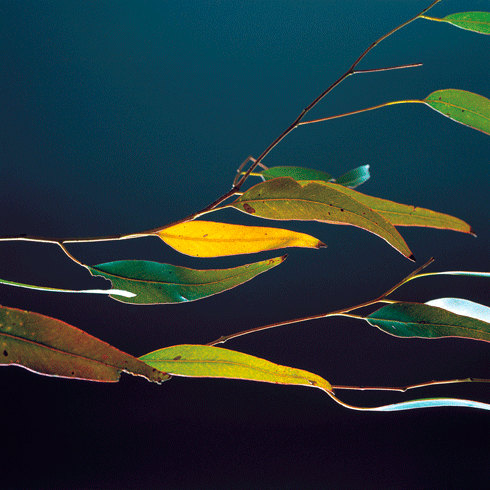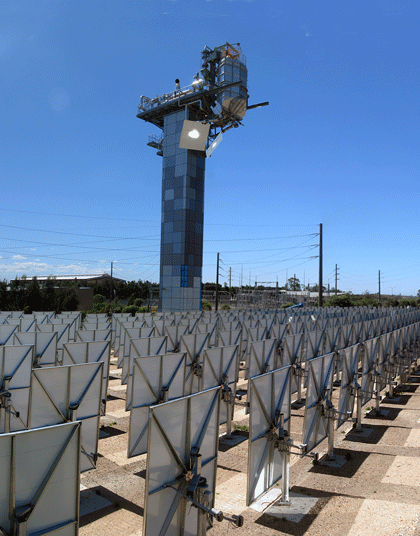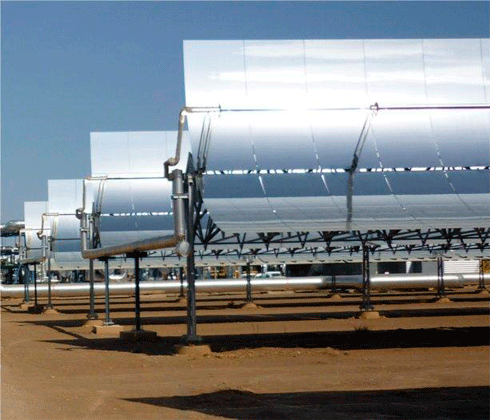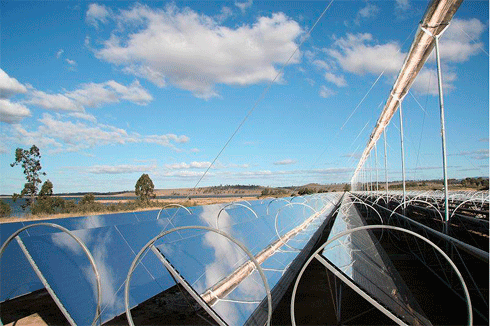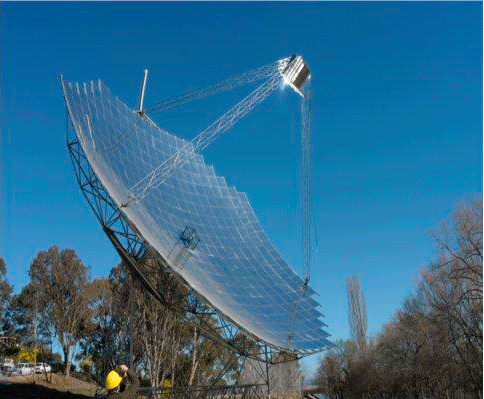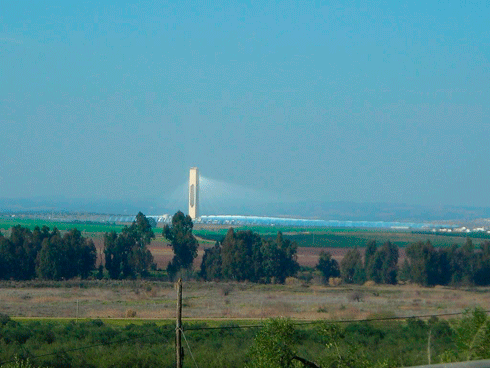
|
Published: 4 May 2011
Rising CO2 plants and biodiversity
Will increased carbon dioxide emissions usher in a new era of more abundant vegetation, enhancing plant production as well as food and shelter for wildlife? While it’s true that CO2 pumped into an artificial greenhouse is a potent fertiliser, planet Earth’s biosphere is not so simple. Carol Booth and Tim Low look at some scientific evidence that highlights the issue’s complexity.
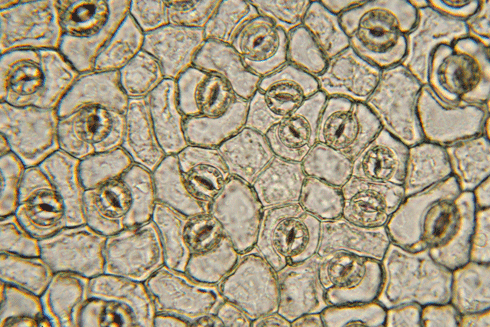
|
|
Microscopic stomata on the underside of leaves regulate the uptake of CO2 and release of oxygen in plants. Credit: istockphoto
|
The prospect of increased atmospheric CO2 has long interested biologists, not only because of the potential impacts on plants due to CO2-driven climate change, but because CO2 also stimulates plant growth. CO2 is a vital ingredient of photosynthesis – the biochemical reaction through which most plants metabolise CO2 and water into plant sugars – and higher CO2 levels increase the rate of photosynthesis.
However, Australia’s water scarcity and nitrogen-poor soils mean that increased atmospheric CO2 is likely to have limited plant growth benefits. It could also reduce our plant and animal biodiversity. This is not just because increased atmospheric CO2 will increase temperatures and reduce rainfall in some areas, but because plants that benefit from higher CO2 may have adverse impacts on native animals and other plants.
Atmospheric CO2 is expected to double from pre-industrial levels by about 2050. Because current CO2 levels limit the rate of photosynthesis, plants should – in theory – grow faster as temperatures rise and use water and nitrogen more efficiently. When plants open the stomata (pores) in their leaves to take up CO2 , they lose water from their leaves. Under higher CO2 levels, stomata can be fewer and open less, thereby conserving water.
Some scientists predict that in the absence of other influences, vegetation will become more water-efficient and store more carbon under higher CO2 levels. However, this picture may be too optimistic when climate change, Australia’s infertile soils and irregular rainfall are taken into account.
As CO2 researcher Associate Professor Mark Hovenden from the University of Tasmania says, ‘things will definitely be different, but just how different we don’t know’. He expects CO2 impacts to be subtle in the short term but cumulatively important: ‘that’s the trouble – it means they are likely to be overlooked at first’.
Free-Air CO2 Enrichment studies
The results of traditional CO2 experiments – in which plants are grown in greenhouses or closed chambers with adequate water
and nutrients – show that plants usually thrive under higher CO2. More recently, scientists like Assoc Prof Hovenden and Dr Chris Stokes from CSIRO have undertaken Free-Air CO2 Enrichment (FACE) experiments, which involve manipulating ambient CO2 levels around plants growing in the open, instead of greenhouses.
Because they are costly, few FACE experiments have been conducted in Australia. The Australian savanna (OzFACE) experiment was the world’s first CO2 field experiment in the tropics. TasFACE, led by Assoc Prof Hovenden in Tasmania’s grasslands, began in 2002 and
is still underway.
FACE experiments also have limitations. They are usually restricted to small plants grown in small areas; they impose sudden, rather than gradual, increases in CO2; they run for years, rather than decades; and they are often not coupled with climate change impacts.
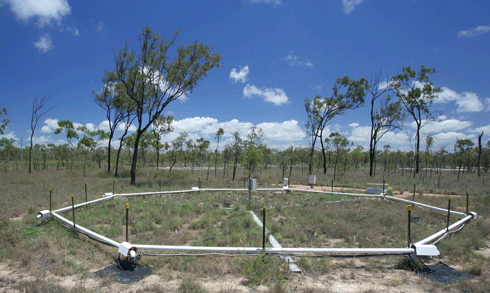
|
|
The OzFACE facility in north Queensland consisted of six rings like this one shown, each 15 m in diameter. The enclosed vegetation was exposed to different levels of CO2. Credit: Chris Stokes
|
Water and nutrient limitations
One of the aims of OzFACE was to demonstrate the water-efficiency response of tropical grasses in a microclimate of elevated CO2. Researchers found that grass growth tended to increase in slightly drier years but not in very dry or wet years.
Experiment leader, Dr Stokes, says greater water-use efficiency is likely to have ‘a pretty substantial benefit in offsetting the negative impacts of climate change’ for the grazing industry. He explains that modelling of grass production in tropical rangelands in northern Australia suggests that doubling pre-industrial CO2 levels could compensate for 10 per cent less rainfall and 1–2°C higher temperatures.1
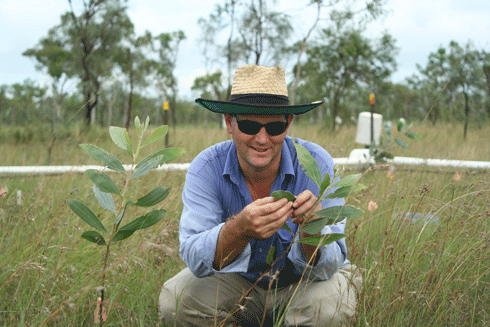
|
|
Researcher Dr Chris Stokes examines a seedling growing under higher CO2 at the OzFACE facility. Credit: Mike Whiting
|
However, TasFACE leader Assoc Prof Hovenden expects compensation in most ecosystems to be slight. ‘It might extend the growing season by only two weeks. And if rainfall declines under climate change are severe, as seems likely, rising CO2 won’t help then.’ With Australia dominated by old weathered soils with scarce nitrogen and phosphorus, ‘in a lot of places we might not see any changes due to higher CO2,’ he adds.
The story gets more complicated however. By increasing photosynthetic efficiency, higher CO2 can increase nitrogen-use efficiency in plants and stimulate nitrogen fixation by legumes, which include native wattles. Some plants may access more nutrients by growing longer roots. Too little is known about the soil’s bacterial and fungal communities to be sure about the outcomes. If plant litter decomposes more slowly under higher CO2, as some studies suggest, plants will have fewer nutrients to draw on.
Both OzFACE and TasFACE have measured less nitrogen available in soils under higher CO2, except in the TasFACE experiment, when temperatures were raised at the same time as CO2. How carbon and nutrient cycles will interact under global warming is clearly a key research question for the future.
Competition between plants
Assoc Prof Hovenden has concluded that plant community composition will change under higher CO2 in most of Australia’s vegetation types, ‘simply because some species will respond differently to others and the competitive balance will change’.
For example, two widespread grasses had similar responses to CO2 in a growth-cabinet experiment but in TasFACE, under higher CO2 and temperatures, the growth of one species declined, allowing the other to dominate.
Change is likely to be most marked where there is intense competition, especially after disturbances such as fire. Under higher CO2, some choking weeds will out-compete native plants and crops for water, nutrients, space or light. Trees and shrubs should benefit more than grasses and herbs, which are less responsive to higher CO2. The boundaries may shift between grasslands, shrublands, woodlands and forests, and the understorey in some woodlands and rainforests could thicken.
Bushfires could be far more damaging in future, from the combination of higher temperatures, longer droughts and thicker vegetation. However, declining rainfall could prevent vegetation thickening in many areas. And fire, grazing pressure and drought are more likely to shape the balance between woody plants and grass than elevated CO2.
In rangelands, Dr Stokes points out that, ‘changes in woody vegetation to date are more strongly influenced by human management, and this will likely continue’ – highlighting the different challenges facing those managing agricultural systems and those managing natural ecosystems.
Impacts on herbivores
Higher CO2 levels generally mean more carbon for plant construction and defence, and might mean less leaf nitrogen for plant-eating animals to convert into protein.
Australian animals living off evergreen trees and shrubs on infertile soils survive on leaves that are tougher, less nutritious and less palatable than in most places, partly due to low levels of soil nitrogen. Nitrogen, in the form of plant protein, is an essential nutrient for leaf-eating animals.
Under higher CO2, herbivore nutrition may suffer as extra carbon is converted into lignin and defensive compounds, and nitrogen is diverted to plant defence.2 This could mean fewer koalas and other leaf-eating mammals, and fewer insects – to the detriment of insect-eating bats and birds. In one experiment, when exposed to high CO2, two food plants of rainforest possums and tree kangaroos produced thicker leaves with less nitrogen, and one also had more secondary metabolites.In another experiment, eucalypts grown in infertile soil produced leaves too tough for beetle larvae to eat.
With typically less than 2 per cent nitrogen (dry weight), eucalypt leaves are already nutritionally marginal, and become inedible for insects below about 1 per cent nitrogen.3 If leaves of many species became unpalatable, consumption of other plants less responsive to CO2 is likely to increase.
However, preliminary greenhouse studies on two eucalypt species by Assoc Prof Hovenden’s team found no changes in leaf chemistry under elevated CO2. He says more research on this important issue is a high conservation priority.

|
|
Under higher CO2, herbivore nutrition may suffer if leaf-nitrogen content drops, impacting populations of koalas, other leaf-eating mammals, and insects. Credit: Robert Kerton, Scienceimage
|
Impacts of pathogens
The impacts of pathogens (disease-causing organisms) on plants under a higher CO2 regime are difficult to predict. The interactions between pathogens and their plant hosts are very specific. One the one hand, higher CO2 can increase plant resistance by promoting a thicker outer layer, more protective wax, reduced stomatal opening and defensive chemicals. However, pathogens may also reproduce more rapidly once they penetrate plant tissue.
The limited global research on crops and forests under increased CO2 shows some diseases increase in severity and others decrease. For example, CSIRO researcher Dr Sukumar Chakraborty has observed greater fertility of the rust Maravalia cryptostegiae, a biological control agent for rubber vine, one of northern Australia’s worst weeds.
Dr Chakraborty says the biggest concern for crop plants is ‘more infection cycles leading to more rapid evolution of new pathogen races’.4 This could outpace breeding of resistant varieties, which takes about 10–15 years. For Australian ecosystems, any change, negative or positive, in serious diseases of native plants such as Phytophthora dieback or eucalyptus rust has substantial implications.
So, while FACE and other experiments have shown how increased CO2 stimulates plant growth – allowing ecosystems to cycle and store more carbon per unit of nitrogen and water available, and altering both the productivity and biochemical composition of vegetation – scientists are faced with a new set of questions.
How will CO2 effects combine with other climate change factors? How will interactions between different types of plants, and between plants and herbivores change? How much carbon can ecosystems sequester before becoming carbon-saturated? And how will changing water use by vegetation alter hydrology at the catchment scale?
More information
Hovenden MJ and Williams AL (2010). The impacts of rising CO2 concentrations on Australian terrestrial species and ecosystems. Austral Ecology 35, 665–684.
1 McKeon GM et al. (2009) Climate change impacts on northern Australian rangeland livestock carrying capacity: a review of issues. Rangeland Journal 31, 1–29.
2 Kanowski J, Hopkins MS, Marsh H and Winter JW (2001) Ecological correlates of folivore abundance in north Queensland rainforests. Wildlife Research 28, 1–8.
3 Lawler IR, Foley WJ, Woodrow IE and Cork SJ (1997) The effects of elevated CO2 atmospheres on the nutritional quality of Eucalyptus foliage and its interaction with soil nutrient and light availability. Oecologia 109, 59–68.
4 Chakraborty S and Datta S (2003) How will plant pathogens adapt to host plant resistance at elevated CO2 under a changing climate? New Phytologist 159, 733–42.


